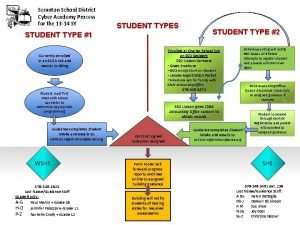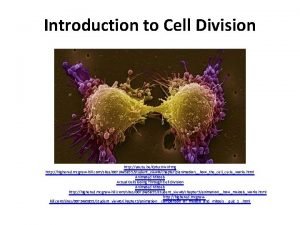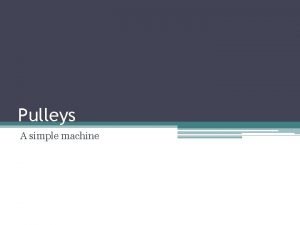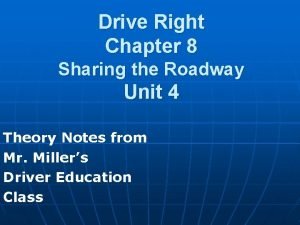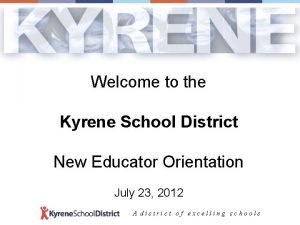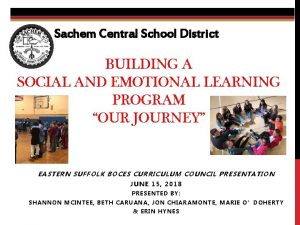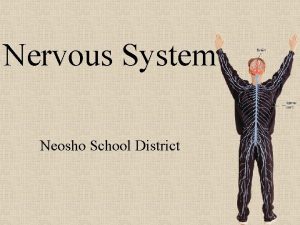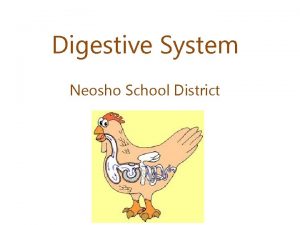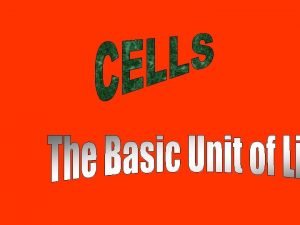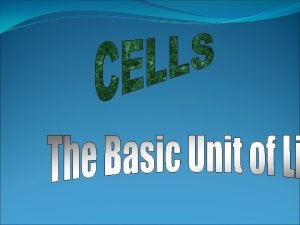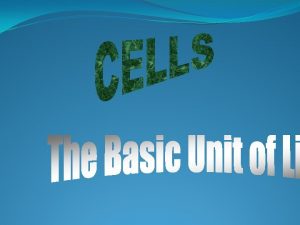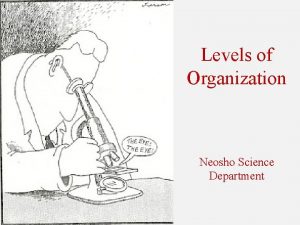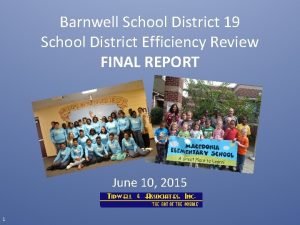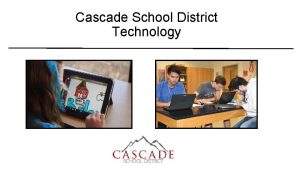How to Make More Cells Neosho School District













































- Slides: 45

How to Make More Cells Neosho School District

Nucleus Most plant and animal cells have a nucleus. Inside this nucleus are instructions on how to be that kind of cell and how to make more cells.

DNA Those instructions are called genetic material. Deoxyribonucleic Acid (DNA) is that genetic material in your cells that carries info. From parent to offspring (new cell).

Chromosome Cellular structures that occur in pairs (23 pr. In humans— 46 total) Carry hereditary information in units called genes

Gene Segment of a chromosome that has information for a trait Thousands of genes on a chromosome



Reproduction is the process of producing offspring Reproduction can occur asexually or sexually

Asexual Reproduction involving only one parent body cell

Asexual Offspring (daughter cell) is identical to parent cell Same genetic information in parent cell is copied and passed on to daughter cell

Types of Asexual Reproduction Budding: Offspring grows out of the parent organism identical to the parent Examples: Hydra, yeast, and Some Plants

Hydra

Yeast

Some Plant Cells

Types of Asexual Reproduction Binary Fission (aka Mitosis): Cell copies itself and divides in two Examples: Single cell organisms, your body cells

Mitosis • Prophase – 1 st Phase of Mitosis – Chromosomes form and duplicate – Centrioles begin to form the spindle – DNA strands attach to the chromosomes at the centromere (the center of the chromosomes) – Nucleolus disappears – Nuclear Envelope breaks apart


Mitosis • Metaphase – 2 nd Phase of Mitosis – The centromeres line up across the center of the cell – The spindle fiber connect the centromeres to the 2 poles of the spindle


Mitosis • Anaphase – 3 rd Phase of Mitosis – Chromosomes are divided at the centromere and separated into two groups at the poles of the spindle


Mitosis • Telophase – 4 th Phase of Mitosis – Chromosomes spread out into chromatin – Nuclear envelope forms – The spindle breaks apart – Nucleolus forms in the nucleus in each of the daughter cells – Cell Membrane begins to pinch in


Asexual Reproduction 46 1 Gene Set DNA Duplicates 2 Gene Sets 1 Gene Set 46 92 Cell Divides 1 Gene Set 46

Cell Cycle

Cell Cycle • Interphase – The 1 st phase of the Cell Cycle – The cell spends most of its time in this stage.

Cell Cycle • Mitosis – The 2 nd Stage of the Cell Cycle – Prophase, Anaphase, Metaphase, and Telophase occur here.

Cell Cycle • Cytokinesis – The 3 rd Phase of the Cell Cycle – The cell membrane grows together and the cell split in two (animal cell) – The cell plate grows from the middle of the cell to the outer edges and the cell splits in two (plant cell)




Sexual Reproduction involving two organisms contributing genes to form a new individual Genetic material from both parents is passed on and combined to form a new gene set for the new organism

Sexual Reproduction Offspring not identical to either parent due to combining of different genetic codes contained in each of the sex cells (23 chromosomes) which are produced by meiosis

Sexual Reproduction Two sex cells are involved The two sex cells each have one-half of a set of genes that are passed from parent to offspring ½ set + ½ set = 1 set

Sexual Reproduction ½ Gene Set 23 23 Cells Combine 46 1 Gene Set

Fertilization Union of a sperm cell with an egg cell

External Fertilization Egg and sperm meet outside the body of the organism Examples: Fish, frogs, toads

Internal Fertilization Egg and sperm meet inside the body of the organism Examples: Mammals, salamanders, reptiles, birds

What does DNA Look Like? Double Helix: two chains that spiral Think of a twisted ladder or spiral staircase.

DNA carries information from parent to offspring. That offspring can be another single cell or a whole new organism. We will focus on just the cells.

Application • Write a diary entry from the perspective of a teenage hydra that just learned it will grow up to be just like its mom because it has the exact same genetic information. Diary entry should be at least 150 words.

• Dear Diary, I just found out that I was created by a process called budding. This means that I was created by………………. and that I will grow up to be just like my mom!!!



 Lirik lagu more more more we praise you
Lirik lagu more more more we praise you More more more i want more more more more we praise you
More more more i want more more more more we praise you Lodi unified summer school
Lodi unified summer school Indian school, al wadi al kabir colors
Indian school, al wadi al kabir colors Scranton school district
Scranton school district Pns water view position
Pns water view position Dr saja
Dr saja Parafollicular
Parafollicular Gametic cells vs somatic cells
Gametic cells vs somatic cells Why dna is more stable than rna
Why dna is more stable than rna Red blood cells and white blood cells difference
Red blood cells and white blood cells difference Eukaryotic life
Eukaryotic life Plant vs animal cell venn diagram
Plant vs animal cell venn diagram Prokaryotic cell
Prokaryotic cell Why did robert hooke name cells “cells”?
Why did robert hooke name cells “cells”? Masses of cells form and steal nutrients from healthy cells
Masses of cells form and steal nutrients from healthy cells Younger cells cuboidal older cells flattened
Younger cells cuboidal older cells flattened 4 types of eukaryotic cells
4 types of eukaryotic cells Are red blood cells prokaryotic
Are red blood cells prokaryotic Chapter 8 cellular reproduction cells from cells
Chapter 8 cellular reproduction cells from cells Cells cells they're made of organelles meme
Cells cells they're made of organelles meme Cell division
Cell division What do cells make up
What do cells make up The more you take the more you leave behind
The more you take the more you leave behind The more you study the more you learn
The more you study the more you learn Aspire not to
Aspire not to Examples of newtons first law
Examples of newtons first law Knowing more remembering more
Knowing more remembering more The more i give to thee the more i have
The more i give to thee the more i have More choices more chances
More choices more chances Human history becomes more and more a race
Human history becomes more and more a race Difference between movable pulley and fixed pulley
Difference between movable pulley and fixed pulley Make me more like jesus
Make me more like jesus How do database applications make databases more useful?
How do database applications make databases more useful? What can we do to make worship more inclusive for all
What can we do to make worship more inclusive for all Motorcyclists can make themselves more visible at night by
Motorcyclists can make themselves more visible at night by Make the lie big keep it simple
Make the lie big keep it simple Steve angrisano go make a difference
Steve angrisano go make a difference Make the lie big, make it simple
Make the lie big, make it simple Kyrene school district
Kyrene school district Anchorage school district office
Anchorage school district office South kitsap skyward
South kitsap skyward School funding reform act
School funding reform act Sacramento city unified school district v. rachel h
Sacramento city unified school district v. rachel h Erin hynes sachem
Erin hynes sachem Puyallup school district frontline
Puyallup school district frontline




